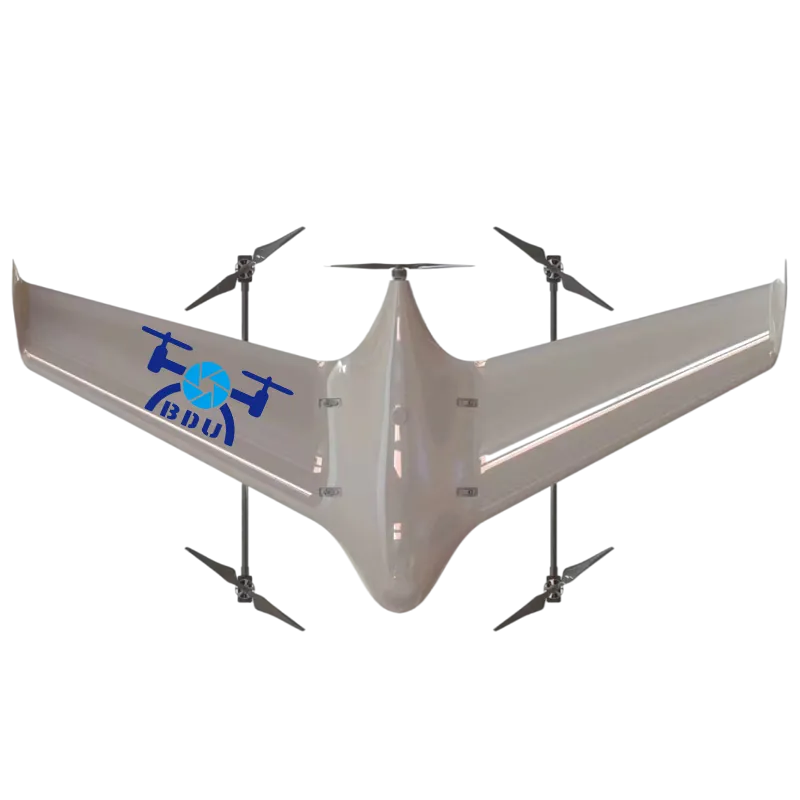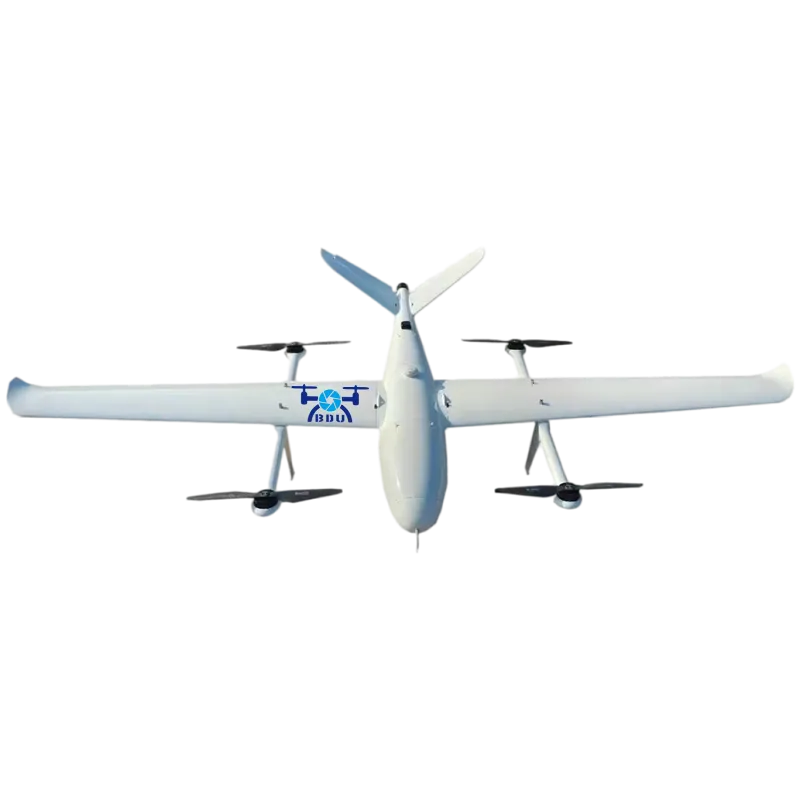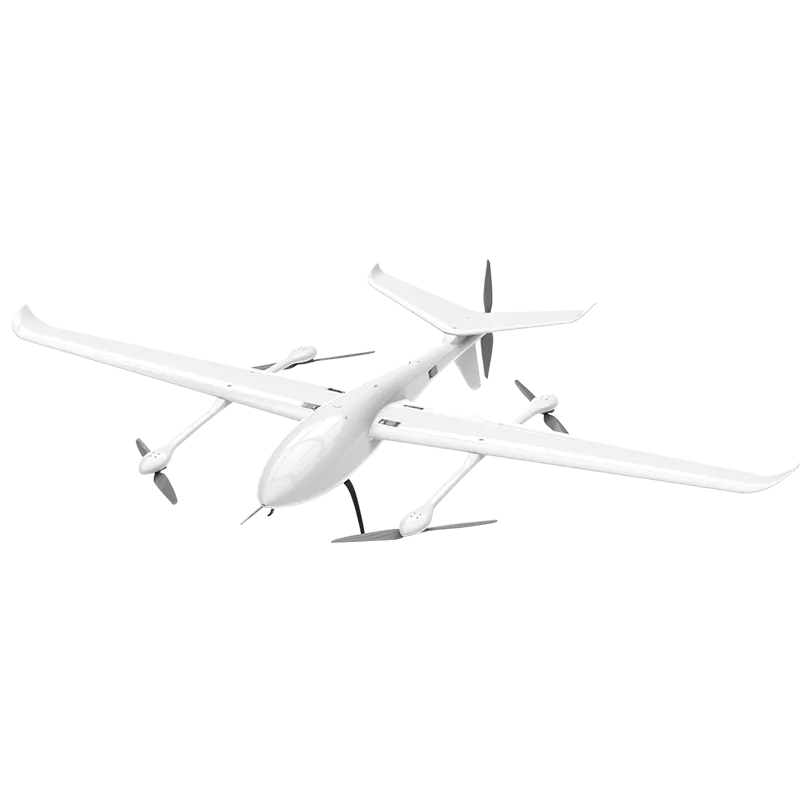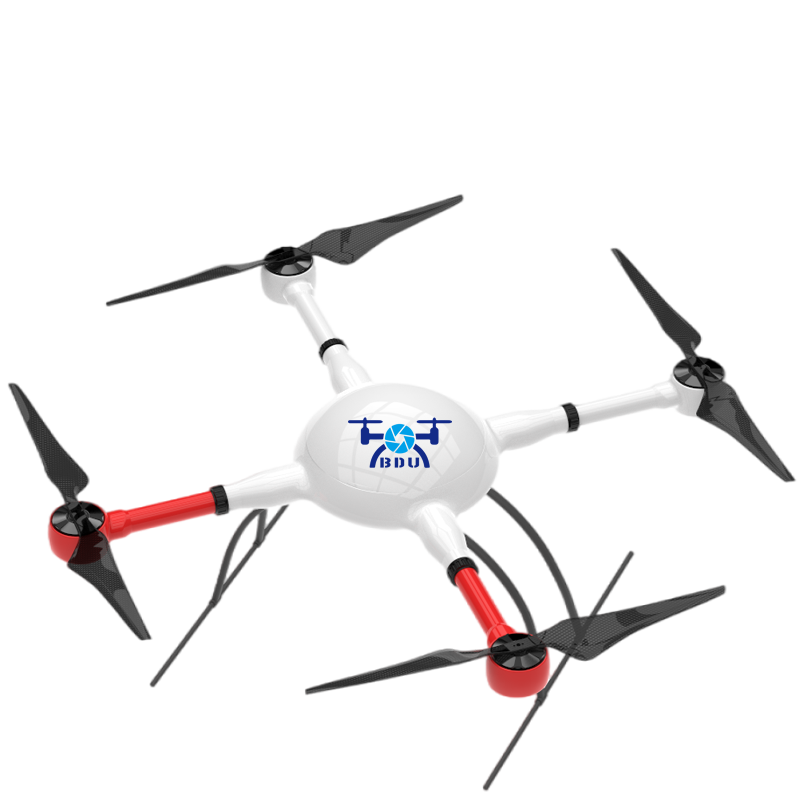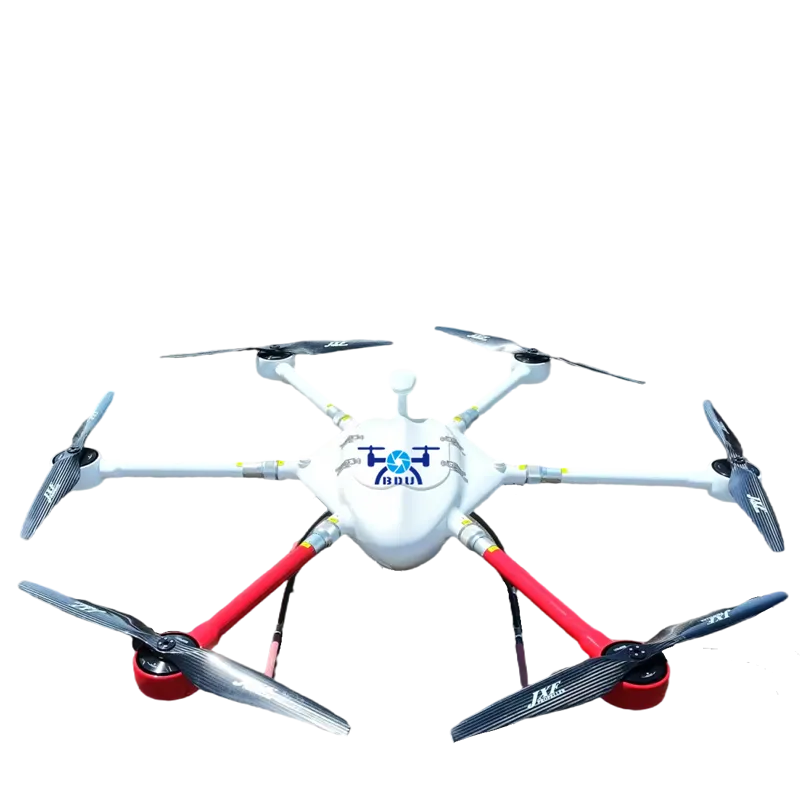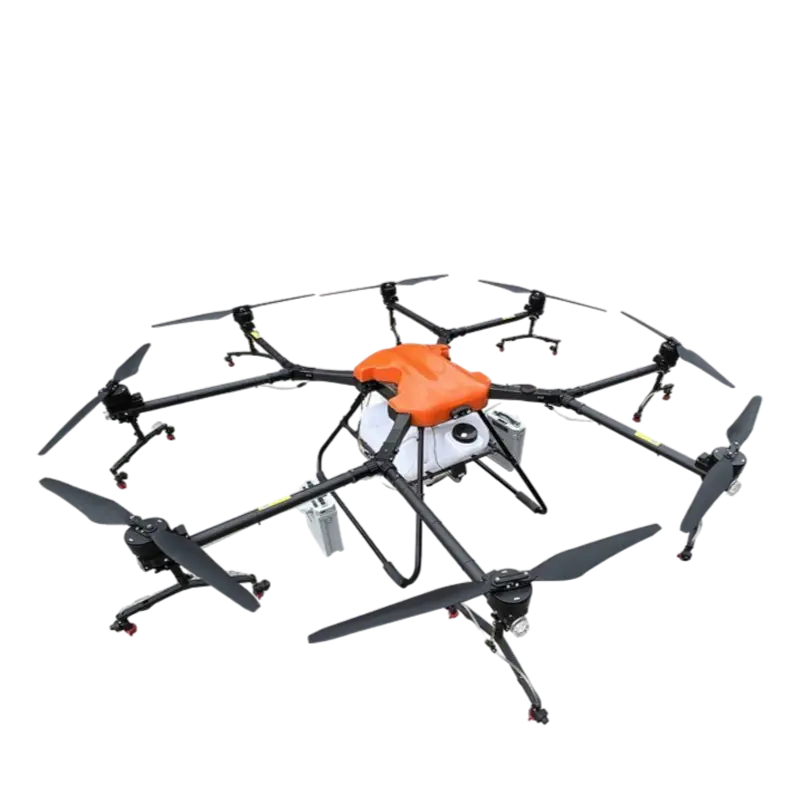Advantages and disadvantages of fixed wing UAV and multi-rotor drone
Fixed wing drones, characterized by their aerodynamic design resembling traditional airplanes, and multi-rotor drones, which include quadcopters and hexacopters, have distinct features that make them suitable for different applications.
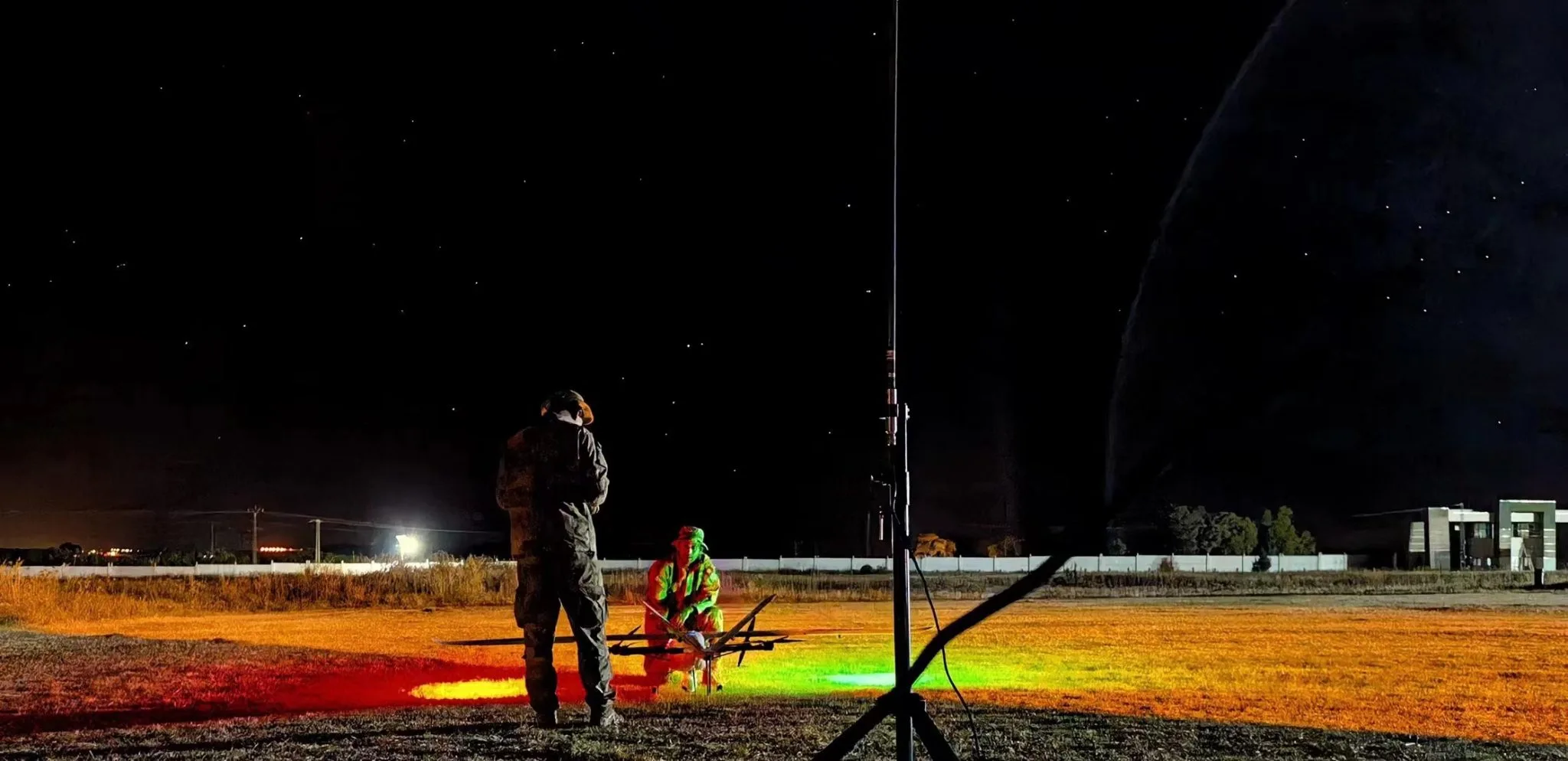
Fixed wing UAV:
Advantages:
- Endurance: Fixed-wing drones typically have longer flight times compared to multirotors. Their efficient aerodynamics enable them to cover larger distances on a single battery charge, making them ideal for surveying and mapping applications.
- Speed: They can achieve higher speeds due to their streamlined design. This makes fixed-wing drones well-suited for tasks that require rapid coverage of large areas, such as agricultural monitoring and wildlife tracking.
- Payload Capacity: Fixed-wing drones can carry heavier payloads because their lift is generated by their forward motion rather than rotor lift. This makes them suitable for carrying advanced sensors, cameras, and mapping equipment.
Reduced Noise: Fixed-wing drones produce less noise compared to multi-rotor drones. This can be an advantage, particularly in applications where low noise is essential, such as wildlife monitoring or surveillance.
Efficient Mapping and Surveying: The forward motion of fixed-wing drones enhances the efficiency of mapping and surveying missions. They can quickly traverse large areas, capturing data in a systematic and organized manner.
Disadvantages:
- Takeoff and Landing Requirements: Fixed-wing drones typically require a runway or catapult launch system for takeoff. Landing can also be more challenging, requiring a dedicated landing strip or recovery system.
- Obstacle Avoidance: It’s very hard for fixed wing UAVs to achieve effective obstacle avoidance, because the speed is too fast to react and avoid in time even if the sensors have detected obstacles. When it’s in cruising status, 100m-distance just takes about 4 seconds to fly over. In most of cases, the distance is less than 100m, no enough response time to take actions.
Limited Maneuverability and Hovering: Unlike multi-rotor drones, fixed-wing drones lack the ability to hover in place. This limits their suitability for tasks that require precise hovering or close-quarters inspection.
Limited Observation Time: The inability to hover means that fixed-wing drones may have limitations in tasks requiring prolonged observation of a specific area.
-
BDU F160 VTOL Fixed Wing UAV 160min Endurance Surveying Mapping Drone
$4,886.00 – $9,943.00 Select options This product has multiple variants. The options may be chosen on the product page -
BDU F210 VTOL Fixed Wing UAV 3.5h Endurance Patrol Drone
$5,739.00 – $11,959.00 Select options This product has multiple variants. The options may be chosen on the product page -
BDU F170 VTOL Fixed Wing UAV 10kg Payload Airdrop Drone
$11,399.00 – $21,429.00 Select options This product has multiple variants. The options may be chosen on the product page
Multi-rotor drone:
Advantages:
- Vertical Takeoff and Landing (VTOL):Multi-rotor drones can take off and land vertically, eliminating the need for a runway. This makes them suitable for operations in confined spaces and urban environments.
- Stability and Maneuverability:The multiple rotors provide stability and the ability to hover in place, making them excellent for tasks that require precise positioning and stable aerial photography or videography.
- Ease of Control:Multi-rotor drones are generally easier to control, especially for beginners. The simple control mechanisms and the ability to hover make them user-friendly.
- Payload Flexibility:Multi-rotor drones are capable of carrying a variety of payloads, ranging from cameras for aerial photography to sensors for mapping and surveying.
- Compact and Portable:The compact design of multi-rotor drones makes them portable and easy to transport. This is advantageous for on-the-go applications and field missions.
- Redundancy:Multi-rotor drones can continue to operate even if one or more rotors fail. This redundancy contributes to increased reliability and safety.
Disadvantages:
- Limited Endurance: Multi-rotor drones generally have shorter flight times compared to fixed-wing counterparts. The limited endurance can be a drawback for tasks that require extensive coverage or prolonged monitoring.
- Less Efficient for Long Distances: Multi-rotor drones are less efficient in terms of energy consumption when covering long distances. Their design requires continuous energy input to keep them airborne.
- Limited Speed: Multi-rotor drones are generally slower than fixed-wing drones. This can be a limitation in applications where high speed is crucial, such as large-area mapping or surveillance.
- Payload Capacity: While multi-rotor drones can carry various payloads, their payload capacity is often limited compared to fixed-wing drones. This can impact their suitability for certain applications that require heavier equipment.
-
BDU Quadcopter Drone Q120 80min Endurance Surveying Mapping Monitoring UAV
$5,143.00 – $8,500.00 Select options This product has multiple variants. The options may be chosen on the product page -
BDU Multi Rotor Drone HD160 Rotary Wing UAV 91min Endurance Aerial Patrol
$6,522.00 – $12,225.00 Select options This product has multiple variants. The options may be chosen on the product page -
BDU Agricultural Drone AE50 Large Capacity 50L Spray Fertilizer Weedicide Pesticide
$9,600.00Original price was: $9,600.00.$9,000.00Current price is: $9,000.00. Add to cart

Ultimately, the choice between fixed wing and multi-rotor drones should consider the specific requirements of the application. If stability and maneuverability and low-speed flight is crucial, a multi-rotor might be the better choice. If covering large distances efficiently and achieving longer flight times are priorities, a fixed wing drone may be more suitable.
Vertical Take-off and Landing (VTOL) fixed wing drones combine the advantages of fixed wing and multi-rotor. They can take off and land vertically, eliminating the need for a runway and reducing the limits of environment. They have longer endurance and range, larger payload capacity than multi-rotor drones, higher stability and convenience than traditional fixed wing drones. Making them a compelling choice for various industries, including agriculture, infrastructure inspection, environmental monitoring, and public safety.
